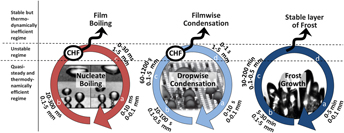This review article provides the state-of-art research and developments of the rectenna device and its two main components – the antenna and the rectifier. Furthermore, the history, efficiency trends, and socioeconomic impact of its research are also featured.
The rectenna (RECTifying antENNA), which was first demonstrated by William C. Brown in 1964 as a receiver for microwave power transmission, is now increasingly researched as a means of harvesting solar radiation. Tapping into the growing photovoltaic market, the attraction of the rectenna concept is the potential for devices that, in theory, are not limited in efficiency by the Shockley–Queisser limit. In this review, the history and operation of this 40-year old device concept are explored in the context of power transmission and the ever increasing interest in its potential applications at terahertz frequencies, through the infrared and visible spectra. Recent modeling approaches that have predicted controversially high efficiency values at these frequencies are critically examined. It is proposed that to unlock any of the promised potential in the solar rectenna concept, there is a need for each constituent part to be improved beyond the current best performance, with the existing nanometer scale antennas, the rectification and the impedance matching solutions all falling short of the necessary efficiencies at terahertz frequencies. Advances in the fabrication, characterization, and understanding of the antenna and the rectifier are reviewed, and common solar rectenna design approaches are summarized. Finally, the socioeconomic impact of success in this field is discussed and future work is proposed.

